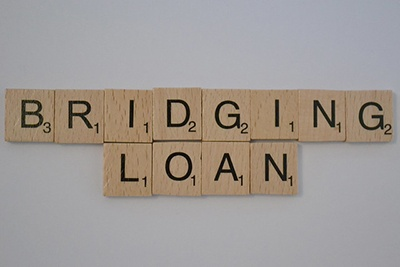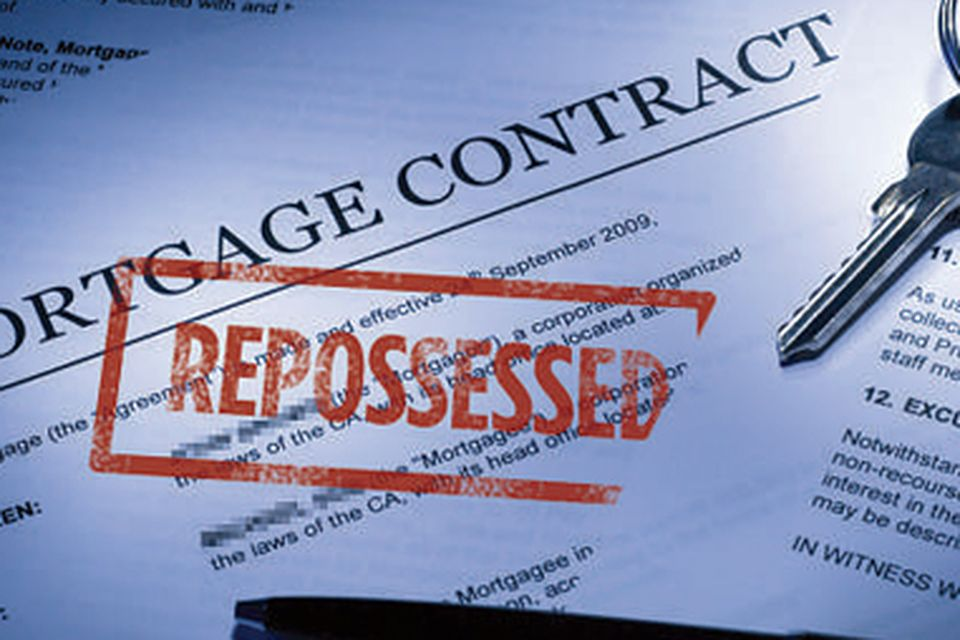Closed Bridging Loans: A Guide
Bridge loans play a pivotal role in the world of finance, offering a short-term solution to bridge the gap between immediate financial needs and a longer-term financing solution. Among the various types of bridge loans, the closed bridge loan stands out as a unique and strategic financial instrument. In this article, we will explore the intricacies of closed bridge loans, shedding light on their definition, characteristics, and the scenarios in which they prove to be invaluable.
Understanding Closed Bridge Loans
A closed bridging loan is a temporary financial arrangement that assists individuals or businesses in meeting immediate capital requirements while awaiting a permanent, long-term financing solution. Unlike open bridge loans, which do not have a specified exit strategy, closed bridge loans are characterised by a predetermined repayment plan.
Key Features of Closed Bridge Loans:
- Fixed Term:
Closed bridge loans have a fixed term, typically ranging from a few weeks to a few months. This finite timeline distinguishes closed bridge loans from their open counterparts, providing borrowers with a clear repayment horizon.
- Specific Exit Strategy:
One of the defining features of closed bridge loans is the presence of a specific exit strategy. Borrowers must outline a clear plan for repaying the loan, often through the proceeds of a planned event such as the sale of a property or the securing of a long-term financing arrangement.
- Risk Mitigation:
Lenders offering closed bridge loans often perceive them as lower-risk compared to open bridge loans. The structured repayment plan reduces the uncertainty associated with the loan, making it an attractive option for both borrowers and lenders.
- Collateral Requirement:
Closed bridge loans typically require collateral to secure the loan. This collateral serves as a form of protection for the lender in case the borrower is unable to fulfil the repayment terms.
Common Use Cases for Closed Bridge Loans:
- Real Estate Transactions:
Closed bridge loans are frequently used in real estate transactions, especially when there is a time-sensitive need for funds to secure a property. Borrowers can use the closed bridge loan to acquire the property and then repay the loan once they secure long-term financing or sell the property.
- Business Expansion:
Entrepreneurs often turn to closed bridge loans to facilitate the expansion of their businesses. These loans provide a quick injection of capital, allowing businesses to seize growth opportunities without being hindered by immediate financial constraints.
- Mergers and Acquisitions:
Closed bridge loans play a crucial role in facilitating mergers and acquisitions. The funds from the bridging loan can be used to cover acquisition costs, and the loan can be repaid once the deal is finalized.
In conclusion
In summary, a closed bridge loan is a structured and short-term financial solution with a specific exit strategy, making it an attractive option for borrowers seeking temporary capital. Whether navigating real estate transactions, funding business expansions, or facilitating mergers and acquisitions, closed bridge loans offer a strategic tool for managing immediate financial needs. As with any financial arrangement, thorough consideration of the terms, risks, and potential benefits is crucial for both borrowers and lenders involved in closed bridge loans.
What is the Monthly Interest Rate on a Bridging Loan?
Bridging loans, a short-term financial solution, cater to individuals and businesses seeking to bridge the gap between the sale of one property and the purchase of another or to fund property development projects. These loans provide quick access to funds but come with higher interest rates compared to traditional mortgages.
Demystifying monthly interest rates in bridging Loans
When seeking a bridging loan, it’s crucial to understand the monthly interest rate, a key factor determining the overall cost of the loan. Monthly interest rates for bridging loans typically range from 0.5% to 2%, with the exact rate varying based on several factors:
- Loan amount and loan-to-value (LTV) ratio: The higher the loan amount and the lower the LTV ratio, the higher the monthly interest rate.
- Property type: Residential bridging loans generally have lower interest rates than commercial bridging loans.
- Lender reputation and risk profile: Lenders with a strong reputation and a lower risk appetite may offer lower interest rates.
- Loan term: Shorter loan terms typically translate to higher interest rates due to the perceived higher risk.
- Market conditions: Fluctuations in market interest rates can impact bridging loan interest rates.
Understanding the impact of monthly interest rates
Monthly interest rates significantly influence the overall cost of a bridging loan. For instance, a £100,000 bridging loan with a 0.5% monthly interest rate and a 12-month term would incur an interest payment of £6,000 over the loan duration.
Factors affecting monthly interest rates
Several factors influence the monthly interest rates of bridging loans:
- Risk profile: Lenders assess the borrower’s creditworthiness and the property’s value to determine the risk associated with the loan. Higher-risk loans attract higher interest rates.
- Security: Lenders consider the value of the property being used as security for the loan. Properties with higher market values generally justify lower interest rates.
- Loan purpose: Bridging loans used for property development or renovations typically have higher interest rates due to the perceived higher risk compared to property purchases.
Minimising interest costs
While monthly interest rates are unavoidable in bridging loans, there are strategies to minimise their impact:
- Seek competitive quotes: Compare rates from multiple lenders to secure the most favourable terms.
- Shorten the loan term: While a shorter term may increase the monthly payments, it can reduce the overall interest charged.
- Consider alternative options: Evaluate other financing options, such as personal loans or remortgaging, if applicable.
- Ensure a strong credit score: A good credit history increases the likelihood of securing a lower interest rate.
- Provide comprehensive documentation: Provide lenders with accurate and complete documentation to expedite the approval process and potentially secure better rates.
In conclusion
Monthly interest rates play a pivotal role in determining the cost of bridging loans. By understanding the factors influencing these rates and employing strategies to minimise their impact, borrowers can make informed decisions and secure bridging loans that align with their financial needs and risk appetite.
How do I Stop Repossession Proceedings?
Facing repossession proceedings can be an overwhelming and stressful experience. However, it’s crucial to know that there are avenues available to stop repossession and regain control of your financial situation. In this blog post, we’ll address the question, “How do I stop repossession proceedings?” and shed light on the potential solution of using a bridging loan to navigate through these challenging times.
Understanding repossession proceedings
Repossession proceedings typically begin when a homeowner falls behind on mortgage payments. In such cases, the lender may take legal action to repossess the property to recover the outstanding debt. It’s a distressing situation, but there are steps you can take to intervene and prevent the repossession process from moving forward.
- Open communication with your lender: The first and most important step is to communicate openly with your lender. Explain your financial difficulties and demonstrate a willingness to find a solution. Some lenders may be open to renegotiating the terms of your mortgage or offering temporary relief.
- Seek professional advice: Consult with financial advisors or housing counsellors who specialise in foreclosure prevention. They can provide valuable insights, assess your financial situation, and guide you through available options.
- Consider a bridging loan: One effective strategy to halt repossession proceedings is to explore the option of a bridging loan. Bridging loans act as short-term financing solutions, providing the funds needed to settle outstanding mortgage arrears and stop the repossession process.
Using bridging loans to halt repossession:
Bridging loans can be a lifeline for homeowners facing repossession. Here’s how these loans can help:
- Immediate access to funds: Bridging loans offer a quick and straightforward application process, providing borrowers with swift access to the funds they need. This speed is crucial when dealing with repossession proceedings, as time is of the essence.
- Settling mortgage arrears: Bridging loans can be used to settle outstanding mortgage arrears, bringing your account up to date and preventing the repossession process from advancing further.
- Temporary financial relief: Bridging loans provide a temporary financial solution, giving homeowners the breathing room needed to address their financial challenges. This temporary relief allows you to explore long-term solutions without the immediate threat of repossession.
In conclusion
Stopping repossession proceedings requires proactive measures, and exploring a bridging loan is one such strategy that can provide swift and effective financial assistance. If you find yourself in a challenging situation, don’t hesitate to reach out to your lender, seek professional advice, and consider the option of a bridging loan to regain control of your financial future. Remember, timely action is crucial in preventing repossession, and there are resources available to help you navigate through these difficult times.
Six Ways a Bridging Loan Can be Better Than a Mortgage
Most homeowners looking to relocate barely think twice about completing a mortgage application. They simply apply for and (perhaps) receive a mortgage instinctively, locking themselves into the same binding long-term agreements as everyone else.
But what if there was a better way for existing homeowners to move to new homes without going down the usually complex and costly channels? Are there flexible, accessible, and affordable alternatives to conventional mortgage loans that are broadly available to mainstream borrowers?
Surprisingly, the answer is yes, and it takes the form of bridging finance.
To put the whole thing into some kind of perspective, here are just six of the countless ways a bridging loan can be better than a mortgage:
- Faster applications: With a mortgage application, it is not uncommon to wait up to 8 or even 12 weeks to gain access to the money you need. With bridging finance, the whole process can be wrapped up in just a few working days, never more than a couple of weeks. When time is a factor (which has a tendency to apply to all property purchases these days), bridging finance can be so much faster to arrange than a conventional mortgage.
- Property purchases for cash: With bridging finance, you essentially turn yourself into a cash buyer. By doing so, you gain access to all the benefits usually reserved for those who buy homes for cash. You can bid on properties at auction, you can place offers on off-market properties of all kinds, and you can qualify for preferential rates by buying your next home for a single (and fast) lump-sum cash payment.
- Easy to obtain: Comparatively speaking, obtaining a bridging loan can be surprisingly straightforward. Eligibility criteria for bridging loans tend to be much more relaxed than with a conventional mortgage. Your credit history and income level will not necessarily stand in your way, just as long as you provide your lender with proof of a viable exit strategy (how you intend to repay your loan). It is even possible to qualify for bridging finance with no formal proof of income and/or a history of bankruptcy.
- Can be used to purchase any property: Major banks place heavy restrictions on the kinds of properties their mortgages can be used to purchase. Elsewhere, bridging loan specialists place no such restrictions whatsoever on their products. If you qualify for a bridging loan, you can use the funds to purchase any type of property you like. This includes properties that would normally be considered ‘not mortgageable’, making it much easier to pick up homes in questionable conditions to then renovate to a higher standard.
- Rock-bottom interest rates: Bridging finance is designed to be repaid as promptly as possible and can be hugely affordable as a short-term solution. Interest is applied monthly at a rate as low as 0.5%, and all other borrowing costs are kept to the bare minimum. Most bridging finance specialists impose no fees or penalties for early repayment, meaning significant sums of money can be saved by repaying the full balance as quickly as possible. Unlike a mortgage, where early repayment can be extremely expensive, assuming it is even an option at all,
- No restrictions on spending: A traditional mortgage comes with the caveat of being issued exclusively for the purchase of a property. With bridging finance, the money can be used for absolutely any legal purpose whatsoever. You could use a chunk of the money to purchase a home or business property and spend the rest in any way you like. Lenders have little to no interest in how their money is to be used; they simply need to know that they will get it back in full and on time.








